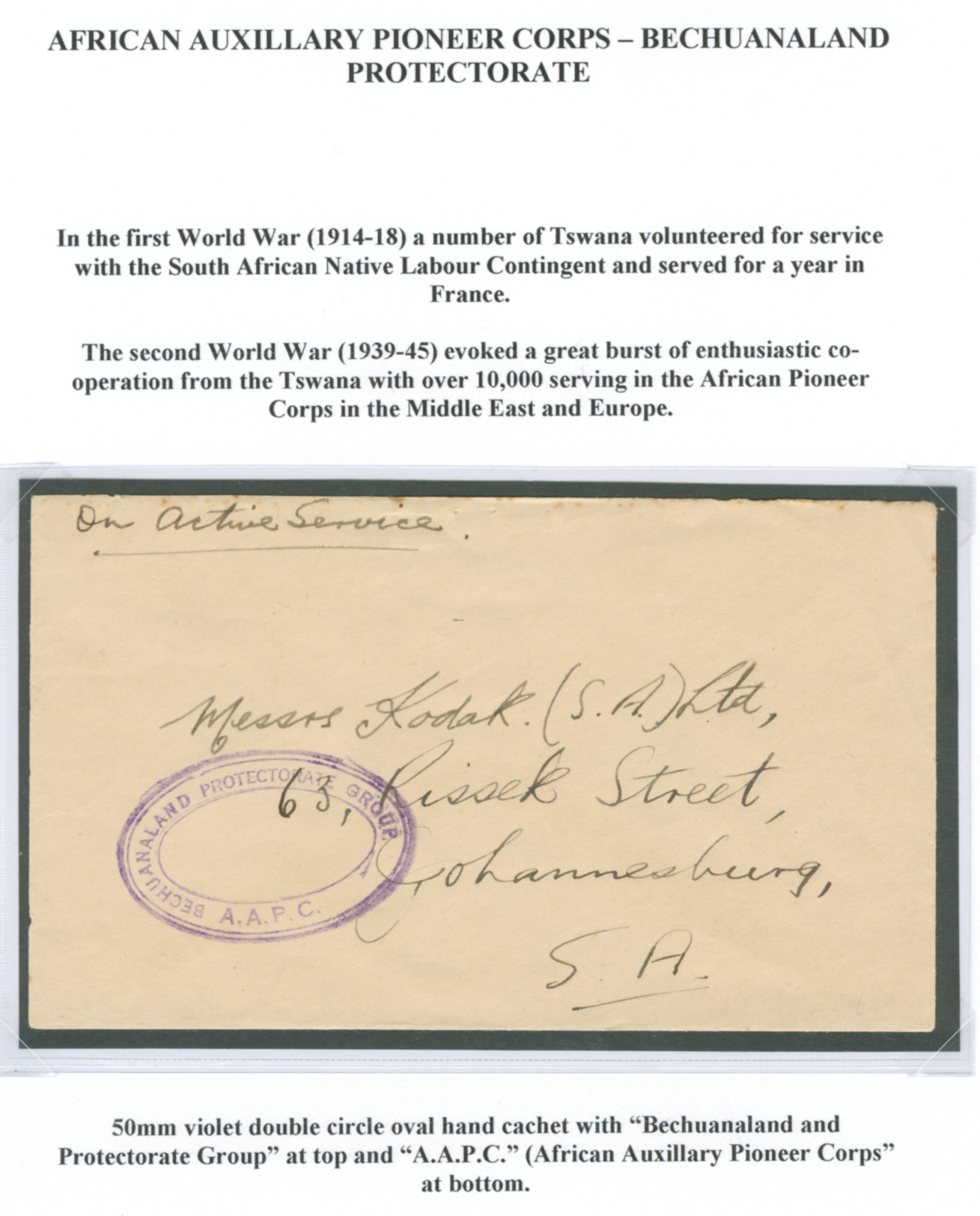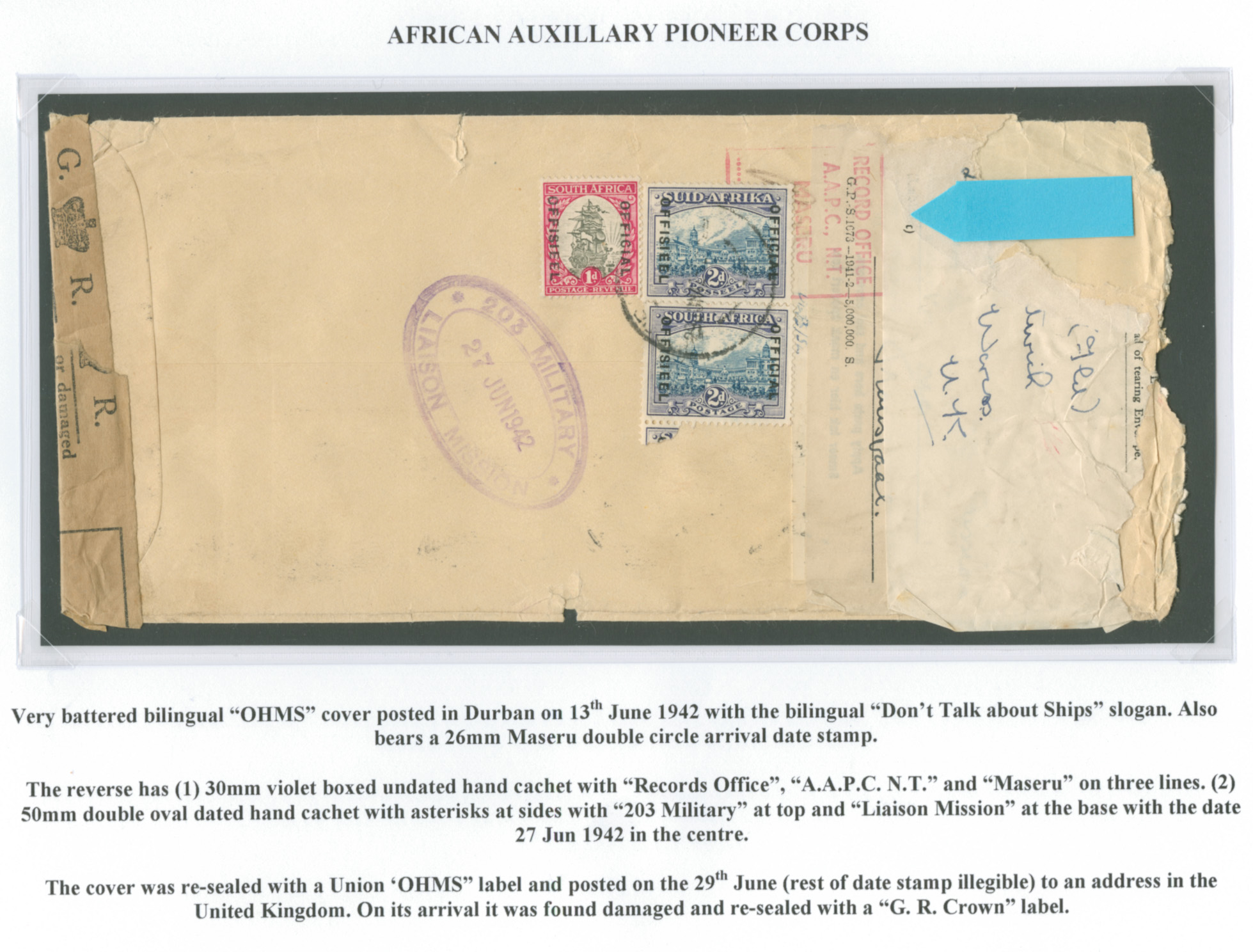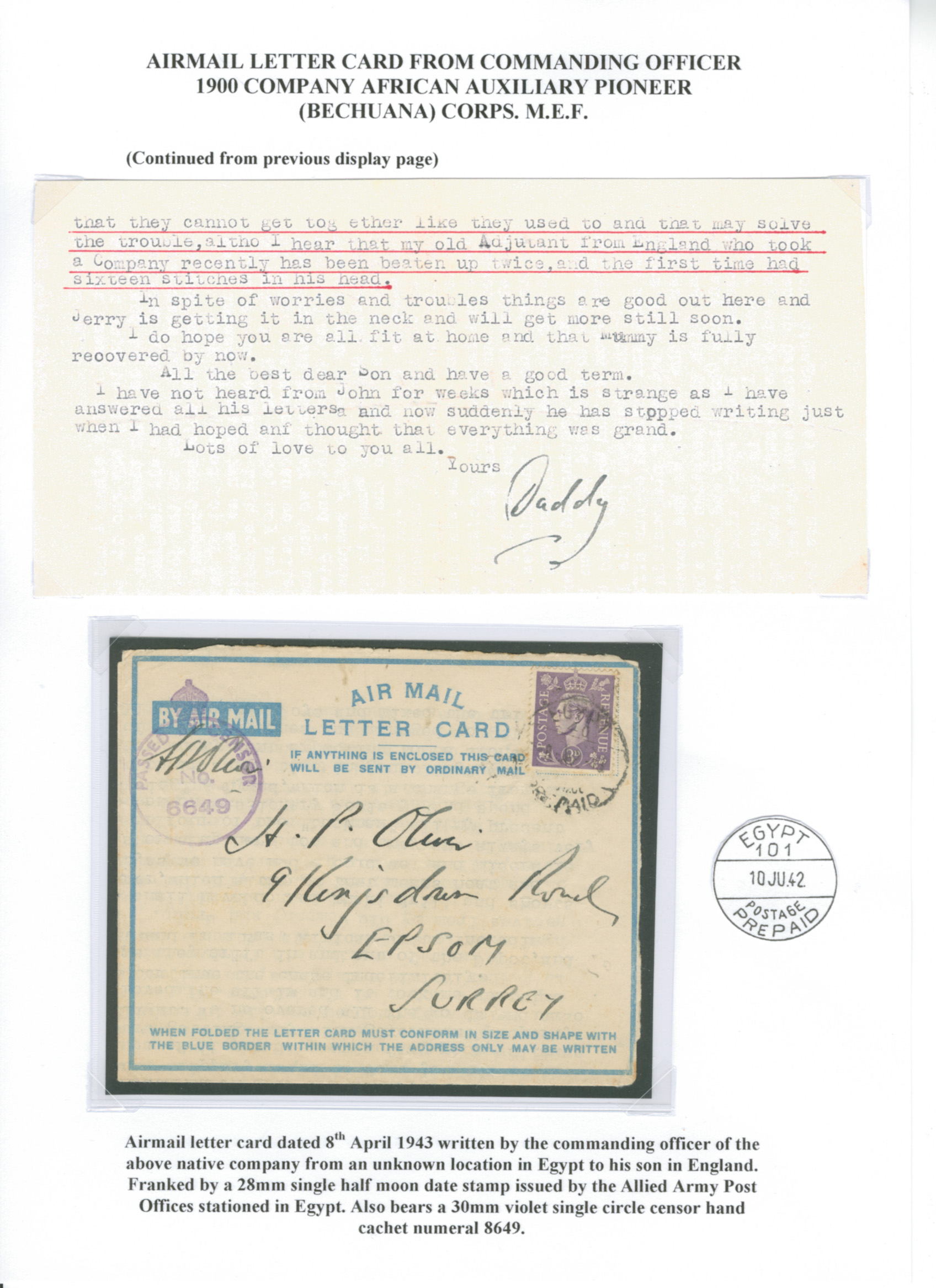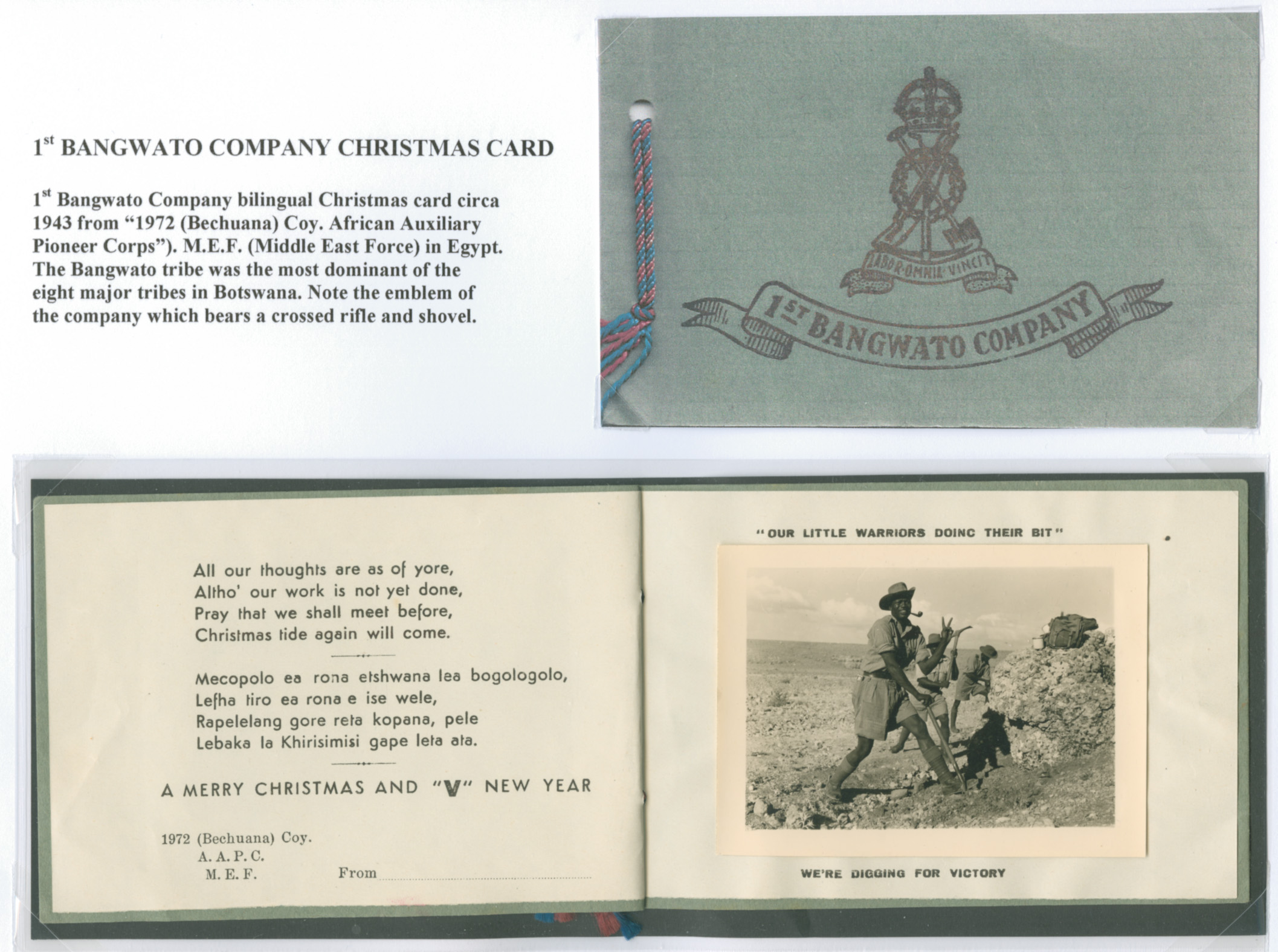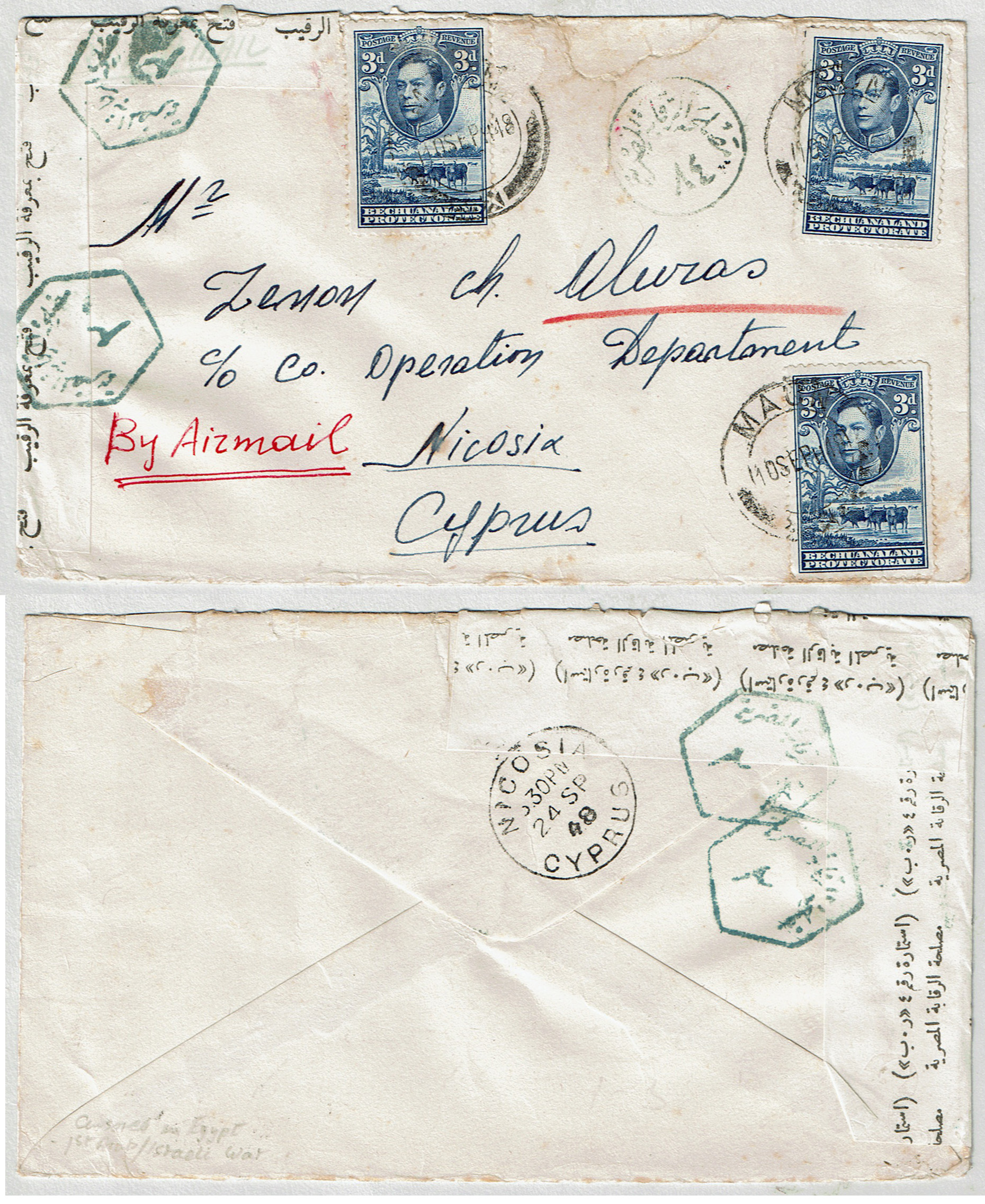WW2 Southern African Pioneers in the British Pioneer Corps
Quote from pthy@ucdavis.edu on January 25, 2021, 10:04 pmSomebody mentioned the Mauritian Mutiny on Madagascar. This summary of the incident is from Jackson's book titled "Distant Drums' from 2010. I can highly recommend the writings by Ashley Jackson (not to be confused by a well known painter of the same name). Jackson did his PhD on the Bechuanaland pioneers and went on the make a name for himself as the premier historian on the role colonies of the British Empire in the WW2. He is now professor at King's College London. I can recommend several of his books and journal articles. Those that perhaps most useful for a general overview is the 2010 'Distant Drums' and perhaps the 2006 'British Empire and the Second World War.' An easy read introduction to the British Empire was released by Oxford in 2013. I recommend searching the usual places (eBay, Amazon, Alibris, Abebooks), but shop around!
Attached is the two pages from the Distant Drums that summarizes the Madagascar event.
PS. As to Steve's comments. I will be happy to dig out my old 1-frame exhibit if somebody think that it would be useful. Perhaps Jamie already have got a copy. It is unfortunately not likely to be updated anytime soon, if ever.
Somebody mentioned the Mauritian Mutiny on Madagascar. This summary of the incident is from Jackson's book titled "Distant Drums' from 2010. I can highly recommend the writings by Ashley Jackson (not to be confused by a well known painter of the same name). Jackson did his PhD on the Bechuanaland pioneers and went on the make a name for himself as the premier historian on the role colonies of the British Empire in the WW2. He is now professor at King's College London. I can recommend several of his books and journal articles. Those that perhaps most useful for a general overview is the 2010 'Distant Drums' and perhaps the 2006 'British Empire and the Second World War.' An easy read introduction to the British Empire was released by Oxford in 2013. I recommend searching the usual places (eBay, Amazon, Alibris, Abebooks), but shop around!
Attached is the two pages from the Distant Drums that summarizes the Madagascar event.
PS. As to Steve's comments. I will be happy to dig out my old 1-frame exhibit if somebody think that it would be useful. Perhaps Jamie already have got a copy. It is unfortunately not likely to be updated anytime soon, if ever.
Uploaded files:
Quote from Underbidder on June 10, 2021, 11:37 amI have been meaning to post some material here for some time but have been without internet access during the Covid lock-down. One of my main interests has been collecting of South African Segregated and Apartheid mail. In looking for that I found postal history that covers segregation in the SA military during two world wars, etc. It used to be easier to find this material which now seems to have become more collectable and expensive. I include a few pieces relevant to the Bechuanaland and Basutoland AAPC here. The aerogramme letter is, I think, the most important from a social history perspective. Regarding "mutiny", it seems that weak officers did not have it all their own way!
I have been meaning to post some material here for some time but have been without internet access during the Covid lock-down. One of my main interests has been collecting of South African Segregated and Apartheid mail. In looking for that I found postal history that covers segregation in the SA military during two world wars, etc. It used to be easier to find this material which now seems to have become more collectable and expensive. I include a few pieces relevant to the Bechuanaland and Basutoland AAPC here. The aerogramme letter is, I think, the most important from a social history perspective. Regarding "mutiny", it seems that weak officers did not have it all their own way!
Uploaded files:Quote from Jamie Smith on June 10, 2021, 11:57 amWelcome on board. Nice to see new material and information - every bit adds to the story. I particually like the card which I have not seen before. Keep up the good work.
Jamie.
Welcome on board. Nice to see new material and information - every bit adds to the story. I particually like the card which I have not seen before. Keep up the good work.
Jamie.
Quote from Steve on June 10, 2021, 2:19 pmI need to resurrect the post on Job Maseko.
By all accounts Job Maseko acted alone in stealthily placing of an improvised explosive device aboard an Axis ship he was working on while a POW under guard. For sinking this ship he was awarded the Military Medal
Today his award is held up as an example of perfidious Albion not wanting to give a deserving South African Black man the VC. But is the truth not more prosaic? Did he not get what his bravery deserved under the circumstances?
Looking at the criteria for a winning a VC, Wikipedia tells us it is awarded for "... most conspicuous bravery, or some daring or pre-eminent act of valour or self-sacrifice, or extreme devotion to duty in the presence of the enemy."
I guess I will disappoint many now by saying that Maseko's act of daring was neither conspicuous, pre-eminent or self-sacrificing. However, he did show devotion to duty in the face of the enemy. But "extreme devotion"? Surely that implies an act that kills you ie. warrants the award of a posthumous VC? Further, in the context of a VC award "in the presence of the enemy" usually means being fired upon in the heat of battle. Maseko was not a combatant but a POW. Add to all this, the fact that a VC award needs to be witnessed by an officer.
One of our members has sent the following:
"I have been battling to get into the ‘reply’ or comment section. I refer to the “WW 2 African Pioneer Corps” articles where mention is made of Job Maseko ‘only’ getting a DCM and not a VC. This is a huge topic now thanks to many ignorant journalists, letters to papers etc. This being hammered out as the ultimate insult to a brave black soldier by racist whites! The reality is that he was not under enemy fire at the time, thus he does not qualify for a VC. What he did was obviously extremely risky and brave. I have great admiration for him but he was not under fire. If he had been a white officer (man!) he would probably have got a GM or a MC but not a VC."
There are as many issues to discuss here as there are brave men who never received any award.
I need to resurrect the post on Job Maseko.
By all accounts Job Maseko acted alone in stealthily placing of an improvised explosive device aboard an Axis ship he was working on while a POW under guard. For sinking this ship he was awarded the Military Medal
Today his award is held up as an example of perfidious Albion not wanting to give a deserving South African Black man the VC. But is the truth not more prosaic? Did he not get what his bravery deserved under the circumstances?
Looking at the criteria for a winning a VC, Wikipedia tells us it is awarded for "... most conspicuous bravery, or some daring or pre-eminent act of valour or self-sacrifice, or extreme devotion to duty in the presence of the enemy."
I guess I will disappoint many now by saying that Maseko's act of daring was neither conspicuous, pre-eminent or self-sacrificing. However, he did show devotion to duty in the face of the enemy. But "extreme devotion"? Surely that implies an act that kills you ie. warrants the award of a posthumous VC? Further, in the context of a VC award "in the presence of the enemy" usually means being fired upon in the heat of battle. Maseko was not a combatant but a POW. Add to all this, the fact that a VC award needs to be witnessed by an officer.
One of our members has sent the following:
"I have been battling to get into the ‘reply’ or comment section. I refer to the “WW 2 African Pioneer Corps” articles where mention is made of Job Maseko ‘only’ getting a DCM and not a VC. This is a huge topic now thanks to many ignorant journalists, letters to papers etc. This being hammered out as the ultimate insult to a brave black soldier by racist whites! The reality is that he was not under enemy fire at the time, thus he does not qualify for a VC. What he did was obviously extremely risky and brave. I have great admiration for him but he was not under fire. If he had been a white officer (man!) he would probably have got a GM or a MC but not a VC."
There are as many issues to discuss here as there are brave men who never received any award.
Quote from pthy@ucdavis.edu on June 11, 2021, 4:08 amThanks to the underbidder for showing his covers. The envelope from the Lobatsi training camp is reasonably common like this mailed to Kodak. What the purpose was is however less than clear. It is undated and without postal markings as is normal. Probably something about ID cards or similar.
The Basutoland cachet on the OHMS cover I have never seen before. What is NT standing for? Also the 203 Military/Liason Mission cachet - where and by whom were it used?
The aerogram with its letter from a British officer to his son is example. The commanding officer was Captain AHH Olivier who first served with Coy 1971 and later with Coy 1990. Coy was involved in breaking an Arabic dock strike at Port Said. Coy 1990 arrived in Egypt at the base camp Qasassin in Jan. 1943 and was repatriated in March 1946.
The greetings card is beyond any praise. Never seen before and difficult to imagine that the soldiers in the field would have the resources to produce anything like this. Was it made in Bechuanaland?
Thanks again for showing this. Wish that they were in my collection.
Peter
Thanks to the underbidder for showing his covers. The envelope from the Lobatsi training camp is reasonably common like this mailed to Kodak. What the purpose was is however less than clear. It is undated and without postal markings as is normal. Probably something about ID cards or similar.
The Basutoland cachet on the OHMS cover I have never seen before. What is NT standing for? Also the 203 Military/Liason Mission cachet - where and by whom were it used?
The aerogram with its letter from a British officer to his son is example. The commanding officer was Captain AHH Olivier who first served with Coy 1971 and later with Coy 1990. Coy was involved in breaking an Arabic dock strike at Port Said. Coy 1990 arrived in Egypt at the base camp Qasassin in Jan. 1943 and was repatriated in March 1946.
The greetings card is beyond any praise. Never seen before and difficult to imagine that the soldiers in the field would have the resources to produce anything like this. Was it made in Bechuanaland?
Thanks again for showing this. Wish that they were in my collection.
Peter
Quote from Steve on June 11, 2021, 7:30 amI know how you feel and I commisserate. Seeing material that isn't in your collection but which should be is tough!
My guess - and it is only a guess - is that 'NT' stands for Native Territories - Basutoland, Bechuanaland and Swaziland. So, why would they use that Eurocentric description in Maseru, Basutoland? Well, probably because Basutoland and the Records Office were largely managed by Europeans in 1942. It reveals polite South African / British racial attitudes.
Regarding the Military/Liason Mission cachet. Jamie Smith shows a circular one for Military Mission 100. (This is an example of me wishing that it was in my Simonstown collection!) Jamie's example is on the front of his "How SA Won the War: 4. The SA Navy and Air Force." I have been told that there were quite a few of these Military/Liason Mission cachet used in SA by British forces. It is suggested that Jamie's one was used by the RAF in SA, probably as part of the Commonwealth Air Training Plan. I think the operative word is 'Liason' ie. accomodating the Smaller Southern African Contribution within the Bigger Imperial (British) WW2 Effort.
I know how you feel and I commisserate. Seeing material that isn't in your collection but which should be is tough!
My guess - and it is only a guess - is that 'NT' stands for Native Territories - Basutoland, Bechuanaland and Swaziland. So, why would they use that Eurocentric description in Maseru, Basutoland? Well, probably because Basutoland and the Records Office were largely managed by Europeans in 1942. It reveals polite South African / British racial attitudes.
Regarding the Military/Liason Mission cachet. Jamie Smith shows a circular one for Military Mission 100. (This is an example of me wishing that it was in my Simonstown collection!) Jamie's example is on the front of his "How SA Won the War: 4. The SA Navy and Air Force." I have been told that there were quite a few of these Military/Liason Mission cachet used in SA by British forces. It is suggested that Jamie's one was used by the RAF in SA, probably as part of the Commonwealth Air Training Plan. I think the operative word is 'Liason' ie. accomodating the Smaller Southern African Contribution within the Bigger Imperial (British) WW2 Effort.
Quote from Jim Findlay on June 11, 2021, 8:31 am203 Military Mission was the British mission based in Pretoria (with a 203 Liaison Mission in Cape Town and at Defence Headquarters) to co-ordinate the many units and activities of British forces in South Africa during the war. There was the Joint Air Training Scheme with many RAF training units throughout the country which was administered under 203 MM by the Air Ministry Mission also in Pretoria; a large Royal Navy contingent at Simonstown and Cape Town; there was No. 1 Army Postal Regulating Depot at Durban which was the largest British post office handling military mail apart from Mount Pleasant near London; and there were the Imperial Forces Transhipment Camps at Clairwood, Durban, and Westlake, Cape Town. Part of the large 203 Military Mission mandate was the administration of the AAPC contingents from the three High Commission territories.
203 Military Mission was the British mission based in Pretoria (with a 203 Liaison Mission in Cape Town and at Defence Headquarters) to co-ordinate the many units and activities of British forces in South Africa during the war. There was the Joint Air Training Scheme with many RAF training units throughout the country which was administered under 203 MM by the Air Ministry Mission also in Pretoria; a large Royal Navy contingent at Simonstown and Cape Town; there was No. 1 Army Postal Regulating Depot at Durban which was the largest British post office handling military mail apart from Mount Pleasant near London; and there were the Imperial Forces Transhipment Camps at Clairwood, Durban, and Westlake, Cape Town. Part of the large 203 Military Mission mandate was the administration of the AAPC contingents from the three High Commission territories.
Quote from Steve on June 11, 2021, 10:50 amExcellent, Jim. That is complete, succinct and defintive. So, I will so no more than "Many Thanks".
Excellent, Jim. That is complete, succinct and defintive. So, I will so no more than "Many Thanks".
Quote from Underbidder on June 11, 2021, 11:06 amMany thanks to all who have commented on my AAPC material. This is very helpful, a great response.
I had no knowledge of the 203 Military Mission cachet before posting this. Thank you for your advice, Jim.
Peter, I have taken the greeting card out and examined it. There are no references to any printers or town.
Many thanks to all who have commented on my AAPC material. This is very helpful, a great response.
I had no knowledge of the 203 Military Mission cachet before posting this. Thank you for your advice, Jim.
Peter, I have taken the greeting card out and examined it. There are no references to any printers or town.
Quote from pthy@ucdavis.edu on June 14, 2021, 9:31 amHere is an airmail 1948 cover mailed from Bechuanaland to Cyprus but appears to have been redirected via Cairo. I assume that there were no direct flight from southern Africa to Cyprus and that it therefore went to Cairo where it received several postal markings and censor label before being forwarded to Nicosia. There is a pencil note on the reverse saying 'censored in Egypt .....'. Can any read the Arabian censor labels and the markings and the postal marking?
Here is an airmail 1948 cover mailed from Bechuanaland to Cyprus but appears to have been redirected via Cairo. I assume that there were no direct flight from southern Africa to Cyprus and that it therefore went to Cairo where it received several postal markings and censor label before being forwarded to Nicosia. There is a pencil note on the reverse saying 'censored in Egypt .....'. Can any read the Arabian censor labels and the markings and the postal marking?
Uploaded files:


